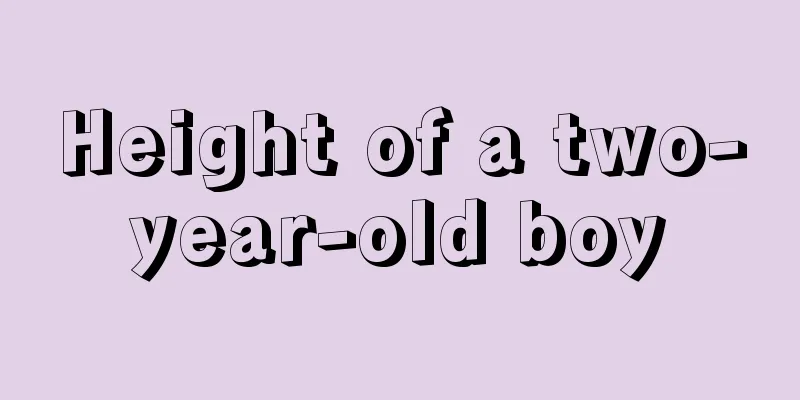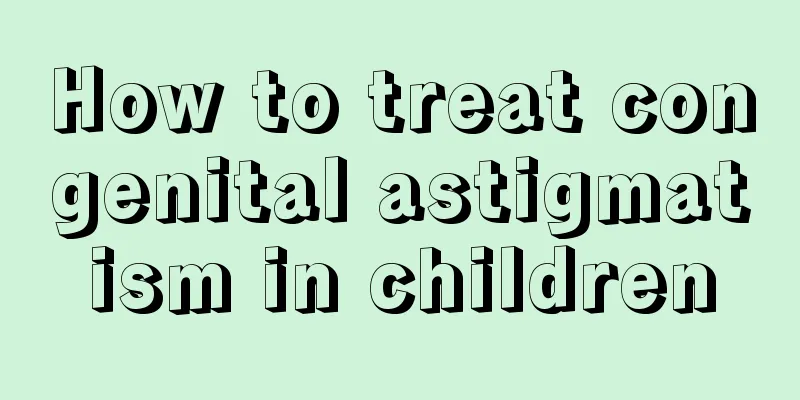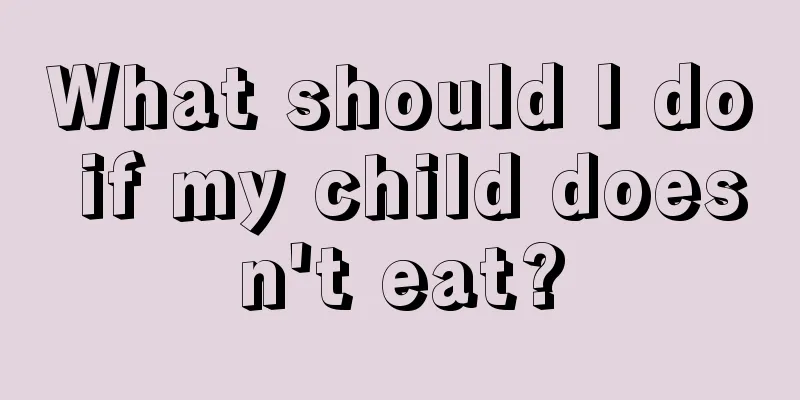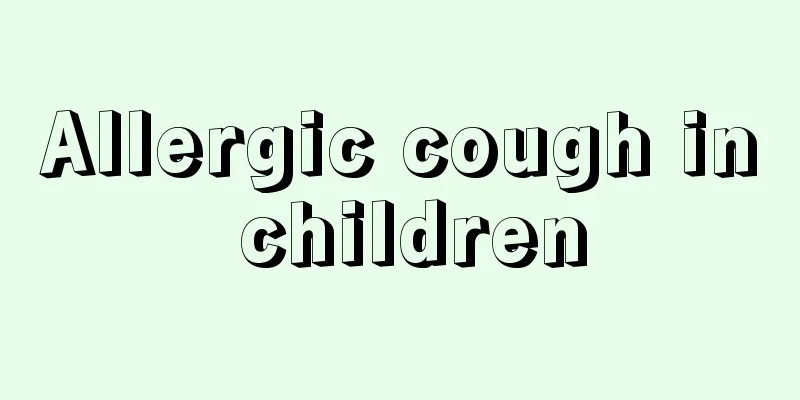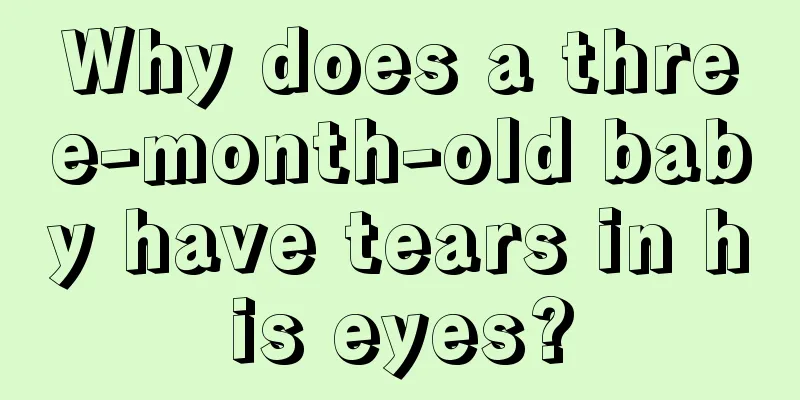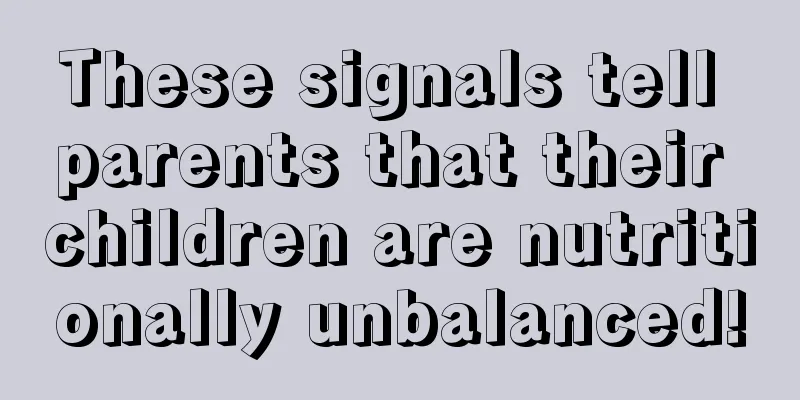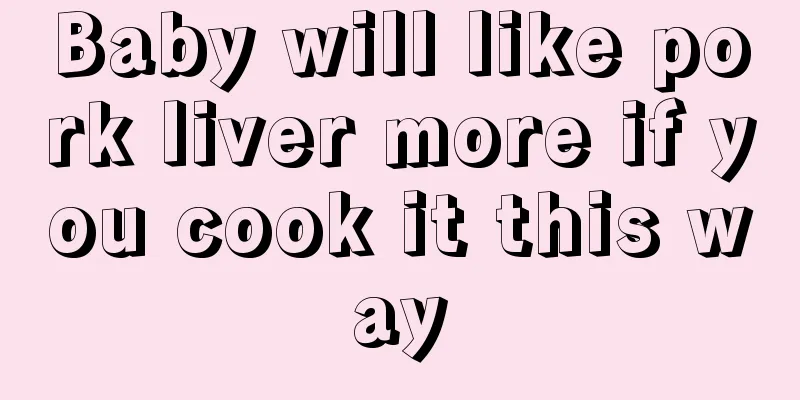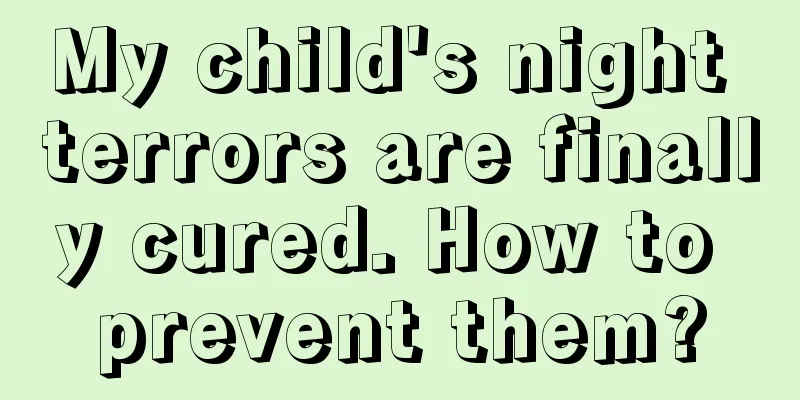Why do people have seizures?

|
Cold and fever are symptoms of illness that people often experience. Some people will experience other conditions, such as convulsions, after experiencing a cold and fever. The problem of convulsions cannot be ignored because it can easily lead to other serious diseases, such as spasms. It can also cause brain diseases such as meningitis. Therefore, once you discover that you are having convulsions, you must seek prompt examination and treatment. Why do people have convulsions?
1. Causes of convulsions Convulsions, medically known as "convulsions", are a common emergency in children. During a convulsion, the child suddenly loses consciousness, his eyes roll up, and he stares or squints; the facial muscles or limb muscles become rigid, hard, spasmodic, or twitching constantly, and a single attack can last from a few seconds to several minutes. The various behaviors of children during convulsions make parents, especially young mothers, terrified and at a loss. Many diseases can cause convulsions in children, but they can generally be divided into two categories: febrile convulsions and non-febrile or low-febrile convulsions. Common diseases that cause fever convulsions include high fever convulsions, epidemic meningitis, various purulent meningitis, tuberculous meningitis, Japanese encephalitis, other viral meningitis, toxic encephalopathy, neonatal tetanus, brain abscess, etc. Diseases that cause afebrile or inefficient convulsions include intracranial hemorrhage, brain hypoplasia or malformation, severe cerebral hypoxia, infantile tetany, hypoglycemia, uremia, hepatic coma, infantile spasms, epilepsy, brain tumors, hypertensive encephalopathy, poisoning, etc. In real life, convulsions caused by high fever are the most common, and those caused by epilepsy are also not uncommon. 2. Emergency treatment of high fever and convulsions Children between six months and four years old are most likely to have convulsions due to high fever. Some children suddenly develop a high fever when they are babbling or playing, and then have a convulsion a few hours later. Convulsions are often characterized by systemic rigidity, stiffness, and spasms, which occur once or twice a day and will not recur after that, even if the body temperature does not drop. It is extremely rare for more than three attacks a day. There are often similar patients in the families of such sick children, and about half of them will also suffer from convulsions when they have a high fever in the future. If you find your child having convulsions due to a high fever, if there are antipyretics at home, you should immediately give them according to the child's usual dosage. If you are taking aspirin, it is best to use it in combination with an appropriate amount of sedatives such as phenobarbital, which will be more effective in reducing fever and stopping convulsions. For children with high fever, in addition to taking antipyretics in time, you should immediately apply a cold towel to their head and give them a bath with white wine, 30-50% alcohol or warm water. Rub until the child's skin turns red, which will help the body temperature dissipate through the expanded capillaries on the surface of the body. You can also use ice packs (or fill a glass bottle with cold water) and place them under the child's armpits, thighs, and other areas with large blood vessels to help lower the body temperature. When a seizure occurs, in addition to the damage to the brain cells inside the body due to lack of oxygen, it can also cause some external injuries and other complications, so appropriate measures must be taken to prevent these injuries. Pay attention to the secretions in the mouth and clear them out in time to avoid inhaling them into the trachea and causing respiratory obstruction. Turn the child's head to one side. To prevent your tongue from being bitten during convulsions, use chopsticks wrapped in cloth or thin wood to place between the upper and lower teeth. During a seizure, children should be protected to prevent them from falling off the bed. Also, send the child to the hospital for examination as soon as possible, find out the cause, and actively treat it. In order to prevent children from having convulsions due to external stimulation, the room should be quiet, and there should be less movement or actions that stimulate the child.
1. Children under 2 to 3 years old often have convulsions due to high fever. When a child has a convulsion, parents should not panic. Instead, they should let the child lie on the bed and undress to avoid obstructing breathing. 2. In order to prevent the tongue from being bitten by convulsions and to prevent the tongue from falling backwards, you can wrap the tip of chopsticks with cloth, place it between the teeth, and press down on the tongue. This will keep breathing unobstructed. 3. For children with severe convulsions, you can pinch the "Ren Zhong" point in the middle of the upper lip and the "Yin Tang" point between the eyebrows with your fingers. 4. When a child is having a convulsion, do not feed him water or medicine to prevent phlegm from entering the trachea and causing suffocation or pneumonia. 5. If a child has a high fever, you can apply a cold, wet towel to the child's forehead, or wipe the body with wet water. In summer, it is advisable to wipe the child's limbs with cold water. If you use alcohol mixed with half water to wipe the skin, the fever-reducing effect will be better. 6. Since there are many reasons for convulsions, while taking the above treatments, you should go to the hospital as soon as possible to avoid delaying treatment. Epileptic seizures Epilepsy is commonly known as "epilepsy" or "epilepsy". Anyone who has seen a major epileptic seizure will have an unforgettable impression. There are three characteristics of a grand mal seizure. First, the attack is sudden, or there is a little sign before the attack, such as flashes in front of the eyes, palpitations, shortness of breath, and nervousness; second, it is recurrent, recurring every certain period of time, so there is a "history" to check; third, it is short-term, and each attack usually stops on its own after a few minutes. The process of an epileptic seizure is usually that the child suddenly becomes unconscious, screams, falls to the ground, has dilated pupils, and begins to have whole-body muscle twitches. The head and neck are stiff or twisted to one side, the elbows, wrists, and metacarpophalangeal joints are flexed, the legs are straight, and the feet are turned inward. Due to the spasm of the respiratory muscles, breathing may stop temporarily, and the face changes from pale and congested to cyanosis. After about 5-30 seconds, the muscles of the whole body will twitch rhythmically, breathing will resume, and white foam will be spit out. If the tongue is bitten, blood foam will be spit out, some people will vomit, and some will have incontinence. The convulsions stop 1-3 minutes after the attack. Subsequently, breathing returns to normal, the face gradually turns rosy, and the person goes from coma to deep sleep, and then to blurred consciousness. After about 20 minutes to two hours, he finally wakes up completely. The danger of a severe epileptic seizure is that the child has no self-control and may suddenly fall to the ground in various circumstances, such as by the river. Falling on the road can lead to various dangerous situations, even endangering your life. About 33% of children have their first epileptic seizure between 10 and 19 years old; about 30% are between 1 and 9 years old, so during childhood and adolescence, attention should be paid to whether convulsions are epilepsy. Most of the cases that cannot be found are called primary epilepsy, which is often related to genetics; some are caused by brain trauma, birth injuries (the baby's head is squeezed and damaged during delivery), brain parasitic diseases, and various sequelae of brain diseases. Some patients may also have attacks due to fever, nervous stimulation, noise, fatigue, hunger, drinking, menstruation and other reasons. Convulsions caused by intermittent illness are much more serious than convulsions caused by high fever, and can easily cause various injuries during an attack. Therefore, for such children, they should be allowed to lie on their side or with their heads turned to one side. To avoid your tongue being bitten, you can make a strip with a handkerchief or wrap chopsticks into strips and place them between the upper and lower teeth. Clean the oral secretions in time to keep the respiratory tract open.
(1) Anti-convulsion Soup It is composed of cicada shell, Uncaria rhynchophylla, gardenia, fried jujube seeds, white peony root, indigo, siler, coptis root, mother of pearl and licorice. Decoction in water, once a day or every other day, for 4 weeks. It has the effect of preventing recurrence of convulsions. (2) Qing Palace Powder It is composed of Curcuma aromatica, Gardenia jasminoides, Han Shui stone, Scutellaria baicalensis, Coptis chinensis, tortoise shell, amber, cinnabar and borneol. Grind them into fine powder and determine the dosage according to different ages. This prescription can further clear away residual heat, calm the nerves and extinguish wind. (3) Heat-clearing powder It is composed of cinnabar, amber, Uncaria rhynchophylla, talc, mint, persimmon frost, cardamom and licorice. Grind them into fine powder and determine the dosage according to different ages. This prescription has the effect of calming the nerves and extinguishing wind. Causes of convulsions The causes of convulsions in children are very complicated. The common causes can be divided into two categories according to whether there is fever or not. One is afebrile convulsions, that is, convulsions are not accompanied by fever, which mainly includes two diseases. One is hypocalcemic tetany in children, which is caused by calcium deficiency in the body. It is more common in infants under 1 year old. The other is epilepsy, which is commonly known as "epilepsy". Others include sequelae of encephalitis, kernicterus, etc. The second type is febrile convulsion, which is convulsion accompanied by fever. This type mainly includes two diseases. One is febrile convulsion caused by high temperature stimulation, which is more common in infants and young children under 3 years old. The other is due to infection of the central nervous system, such as encephalitis, meningitis, etc. Of course there are other reasons, such as poisoning, tumors, etc. |
<<: What is going on when a child has a seizure?
>>: How to use your mouth to suction phlegm for your baby
Recommend
What are the dangers of childhood obesity?
Childhood obesity is relatively common in clinica...
How to carry out mental health education for primary school students
In our current lives, many people may have mental...
What is the reason for a child's thick white tongue coating?
Summer is a season when it is easy to get angry. ...
What to do if students have memory loss
Judging from today's education, all school ed...
What to do if your child has oral herpes and a fever
Many children in their early childhood are often ...
Children's height standard index
The child height standard should have different i...
A bump on the head
For children, there are always times when they ar...
What are the precautions for children to use nebulizer?
Nebulizer therapy refers to a treatment method th...
Why does my child cry before going to bed?
We all know that children are lively and active b...
Why do children have itchy teeth?
I believe that many parents will find that their ...
What should I do if I have congenital enamel hypoplasia?
When many children are growing teeth, sometimes t...
Why is the child's face red?
The weather is very cold in winter. We all know t...
How tall and heavy is a three and a half year old boy
The impact of a child's growth on a family is...
What are the symptoms of insufficient qi and blood in children?
What are the symptoms of insufficient qi and bloo...
Newborn baby's mouth keeps moving when sleeping
When a newborn baby is sleeping, his mouth keeps ...

